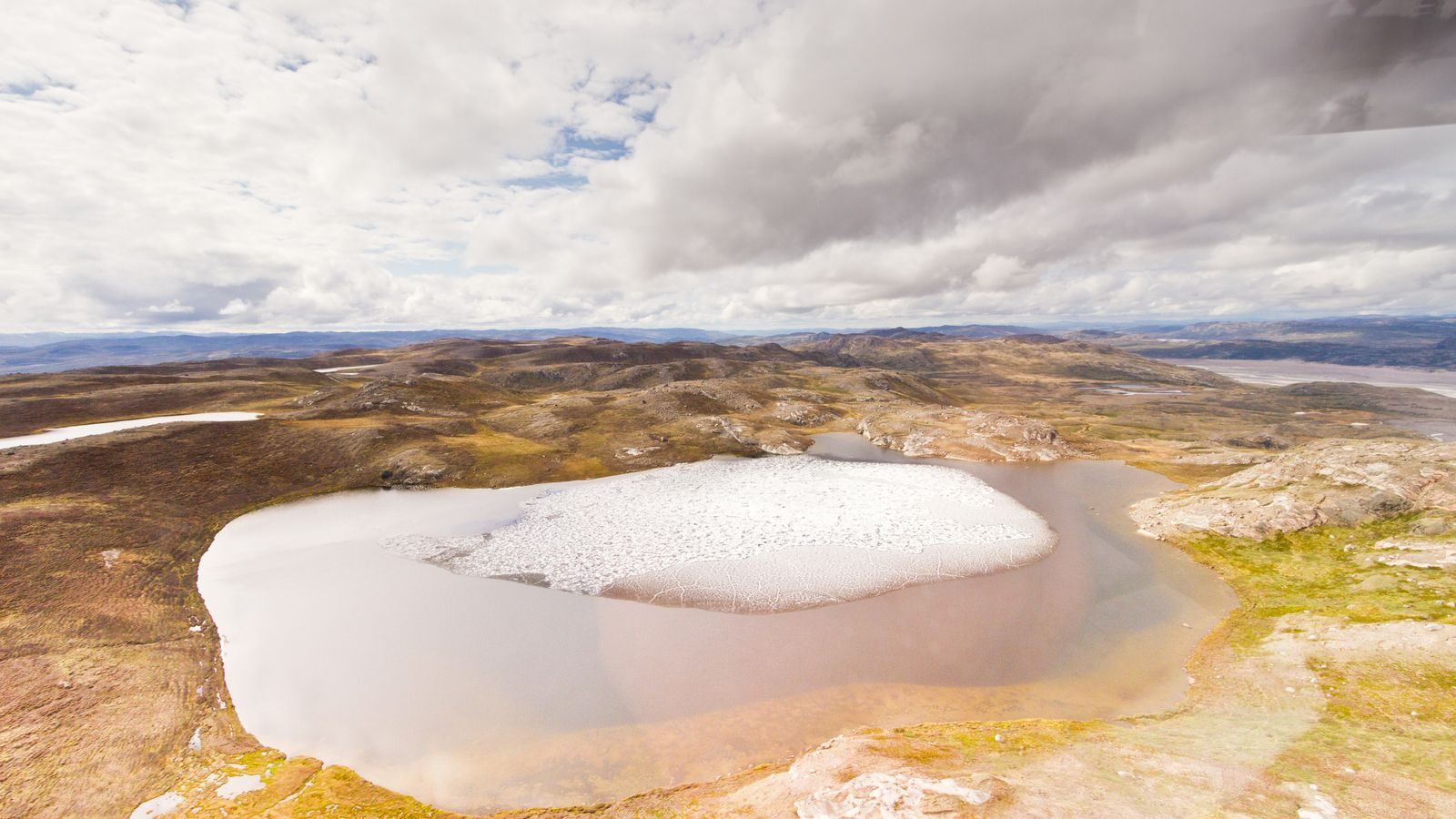Comment: Evidently the climate has been changing from hot to cold, and back again, regardless of human CO2 emissions.
Greenland may have been green and ice-free as recently as 416,000 years ago, new research has found.
The study, published in the journal Science, has raised concerns Greenland's ice sheets may not be as stable as previously thought and provides information on how the region's landscape may react to climate change.
Researchers analysed sediment extracted from an ice core collected in the region, which showed evidence of leaves and moss from that period.
It indicates that a large part of Greenland's ice melted when the Earth warmed moderately between 424,000 to 374,000 years ago, causing global sea levels to rise between five and 20 feet.
The research contradicts the widely held view that much of the Greenland ice sheet has existed for at least a million years, if not longer.
Paul Bierman, a geologist and professor at the University of Vermont in the US, said: "It's really the first bulletproof evidence that much of the Greenland ice sheet vanished when it got warm."
Ice cores are cylinders of drilled ice from glaciers and ice sheets that are essentially frozen time capsules, allowing scientists to reconstruct Earth's climate from millions of years ago.
The ice core analysed in the new research is 12 feet long and was drilled at Camp Century in northwest Greenland, which served as a secret US army base during the Cold War.
The ice sample was forgotten in a freezer for decades and accidentally rediscovered in 2017.
The researchers also found that the sediments in the ice core were deposited by flowing water during a warming period called Marine Isotope Stage 11.
Comment: Because our planet has, overall, been much warmer than it is today, even as recently as the Roman, and Medieval, warming periods, and life thrived.
As well as being ice-free, Greenland may have been transformed into a tundra at that time covered by trees with roaming woolly mammoths or even a boreal forest.
Comment: According to Wikipedia, the definition of tundra:
'In physical geography, tundra (/ˈtʌndrə, ˈtʊn-/) is a type of biome where tree growth is hindered by frigid temperatures and short growing seasons.'Whereas the researchers are also stating that the region could have had enough vegetation to support massive creatures like the mammoth - that have significant energy input requirements - and/or that there could have been forests: Of Flash Frozen Mammoths and Cosmic Catastrophes
The authors of the research said the study is essential for understanding how Greenland's ice sheet will respond to climate warming in the future.
Comment: Apparently it can respond to warming by becoming a beautiful forest that can support stunning wildlife.
The region's ice sheets hold enough water to cause 23 feet of sea level rise, the scientists said, putting every coastal city in the world at risk.
Prof Bierman said: "Greenland's past, preserved in 12 feet of frozen soil, suggests a warm, wet, and largely ice-free future for planet Earth unless we can dramatically lower the concentration of carbon dioxide in the atmosphere.
Comment: One important point that seems to be missed in this study is that there's evidence suggesting that, tens of thousands of years ago, our planet's axis was different and the poles were situated elsewhere: Volcanoes, Earthquakes And The 3,600 Year Comet Cycle
"Four hundred thousand years ago there were no cities on the coast and now there are cities on the coast," he added.
Tammy Rittenour, a professor in the Department of Geosciences at Utah State University, said: "If we melt just portions of the Greenland ice sheet, the sea level rises dramatically.
"Forward modelling the rates of melt, and the response to high carbon dioxide, we are looking at metres of sea level rise, probably tens of metres."




Comment: Greenland, as its name suggests, may have been ice-free - or at least sufficiently hospitable for pastoralism and agriculture - as little as a millennia ago: